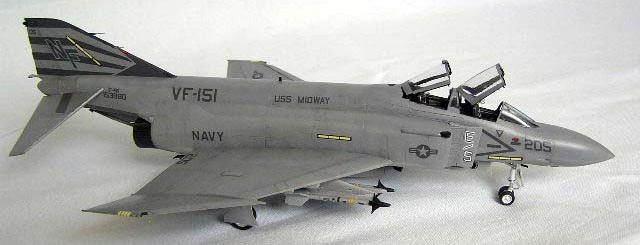
| KIT #: | 00834 |
| PRICE: | $Approximately $30-35.00 |
| DECALS: | four options |
| REVIEWER: | Fernando Rolandelli |
| NOTES: | Highly Recommended |

| HISTORY |
F-4S was the designation applied to 265 (some sources say 248) F-4Js which were upgraded in the mid-1970s with the goal of prolonging their life so that they could remain in service until replaced by the F/A-18 Hornet in Marine Corps service and by the F-14 Tomcat in Navy service.
Major changes included airframe and undercarriage strengthening. The electrical system was completely rewired, and the hydraulic system was replumbed using stainless steel tubing. In order to improve the maneuverability, two-position wing leading-edge maneuvering slats were fitted to the F-4S, which gave a 50 percent improvement in combat turning capability in comparison with an unslatted F-4J.
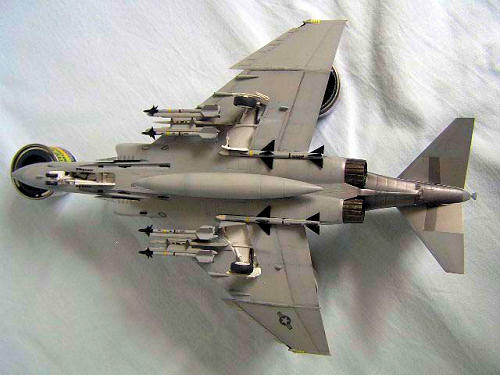 The F-4S
was fitted with the digital AWG-10B weapons control system with new
AN/ARC-159 dual UHF radios and an ARN-118 TACAN (but not to all F-4Ss). The
ALQ-126 or 126A deceptive electronic countermeasures set of the F-4J was
retained, with the same short intake antennae fairings. It was also fitted with
smokeless J79-GE-10B engines with low smoke combustors and low-energy ignition.
Low-voltage formation lights were fitted to the sides of the nose, mid-fuselage,
and tailfin, and staggered cooling ports were fitted near the nosewheel well.
The F-4S
was fitted with the digital AWG-10B weapons control system with new
AN/ARC-159 dual UHF radios and an ARN-118 TACAN (but not to all F-4Ss). The
ALQ-126 or 126A deceptive electronic countermeasures set of the F-4J was
retained, with the same short intake antennae fairings. It was also fitted with
smokeless J79-GE-10B engines with low smoke combustors and low-energy ignition.
Low-voltage formation lights were fitted to the sides of the nose, mid-fuselage,
and tailfin, and staggered cooling ports were fitted near the nosewheel well.
The first F-4S modification (F-4J BuNo 158360) took
off on its maiden flight on
First to get the F-4S was VMFA-451, which began to
receive unslatted planes in June of 1978., while the first Navy squadron to
receive the F-4S was VF-21, based at NAS Miramar in
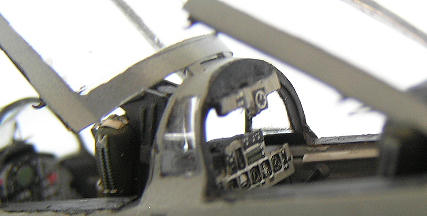 All
throughout the remainder of the 1970s and into the early 1980s, the Navy
progressively replaced its F-4Ss with later equipment in most deployable
carrier-based squadrons. The exceptions were six squadrons which were assigned
to the older and smaller USS Midway (CVA-41), Franklin D. Roosevelt (CVA-42),
and
All
throughout the remainder of the 1970s and into the early 1980s, the Navy
progressively replaced its F-4Ss with later equipment in most deployable
carrier-based squadrons. The exceptions were six squadrons which were assigned
to the older and smaller USS Midway (CVA-41), Franklin D. Roosevelt (CVA-42),
and
| THE KIT |
Hasegawa’s kits are the weapons of choice when building Phantoms in 1/72 (and I guess in 1/48). This particular boxing, no. 00834 “USS Midway Low Visibility” is a very interesting kit with lots of extra parts and four excellent choices in the decal sheet, catering for both late F-4Js and Ss. As all their brethren, cockpit is completely bare, with decals for instrument panel and consoles, so the Eduard SS209 was used for the cockpit and the Airwaves AC48-14 for the canopies. They are also stripped of armament, only fuel tanks and missile rails are included, so some weaponry from the Hasegawa Weapons Set no. VI was added.
| CONSTRUCTION |
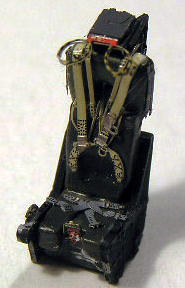
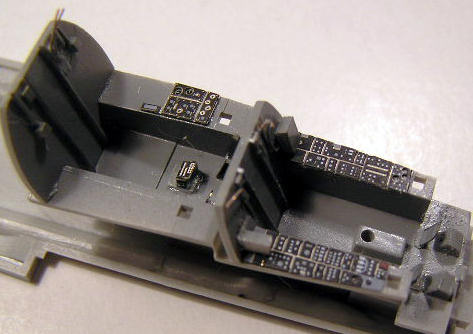 rhead
panel was scratch built with some decals from the kit’s sheet. I chose to use
the kit’s seats with the PE harness and fittings, and the result is quite good.
Assembly of fuselage is a bit tricky because of the parts layout; I am not a
good assembler and had to rely on lots of putty on the intakes and under nose
pan. Outer wing panels’ dihedral can also be a chore and require careful fitting
and gluing. Wheel wells were detailed with pieces of styrene and wire. The
exhaust cans were detailed on the inside with strips of Tamiya tape, an easy
trick that looks quite good, but I did not attempt to do anything inside the
intakes’ trunking (FOD guards are the way to go, I think). I chose to arm my
Phantom with what seems to have been the standard short range Fleet CAP load,
two Sparrows on the rear bays and four AIM-9L Sidewinders (most late Phantoms
should carry just training loads, but this one was an operational fighter, so I
painted the missiles as live rounds), plus the ventral tank.
rhead
panel was scratch built with some decals from the kit’s sheet. I chose to use
the kit’s seats with the PE harness and fittings, and the result is quite good.
Assembly of fuselage is a bit tricky because of the parts layout; I am not a
good assembler and had to rely on lots of putty on the intakes and under nose
pan. Outer wing panels’ dihedral can also be a chore and require careful fitting
and gluing. Wheel wells were detailed with pieces of styrene and wire. The
exhaust cans were detailed on the inside with strips of Tamiya tape, an easy
trick that looks quite good, but I did not attempt to do anything inside the
intakes’ trunking (FOD guards are the way to go, I think). I chose to arm my
Phantom with what seems to have been the standard short range Fleet CAP load,
two Sparrows on the rear bays and four AIM-9L Sidewinders (most late Phantoms
should carry just training loads, but this one was an operational fighter, so I
painted the missiles as live rounds), plus the ventral tank.
| COLORS & MARKINGS |
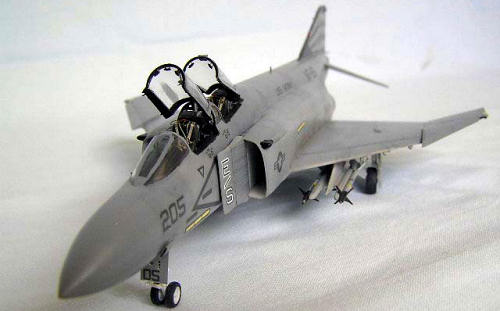
Metal parts were painted a combination of Alclad Aluminium and Exhaust, and Testors Magnesium and Gun Metal.
I chose to paint the missiles in their later livery of FS36375, though in the mid ‘80s they might well have been White overall.
| FINAL CONSTRUCTION |
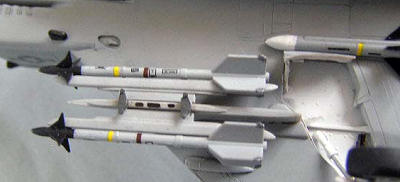
| CONCLUSIONS |
| REFERENCES |
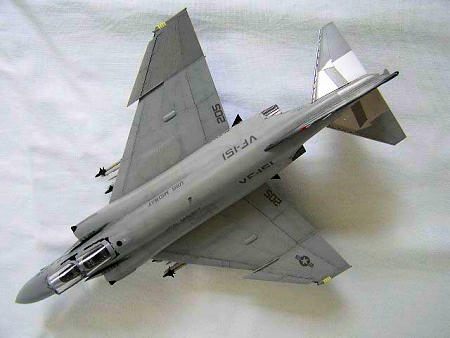 -
JBaugher website
(historical notes)
-
JBaugher website
(historical notes)
- “The McDonnell Douglas F-4 Phantom II, A Comprehensive Guide, Part 2: US Navy and Marine Corps Variants”, Andy Evans, SAM Limited
- “Modelling the F-4 Phantom II”, Geoff Coughlin and Neil Ashby, Osprey Modelling series, Osprey Publishing.
October 2008
Copyright ModelingMadness.com. All rights reserved. No reproduction without express permission.
If you would like your product reviewed fairly and fairly quickly, please contact the editor or see other details in the Note to Contributors.